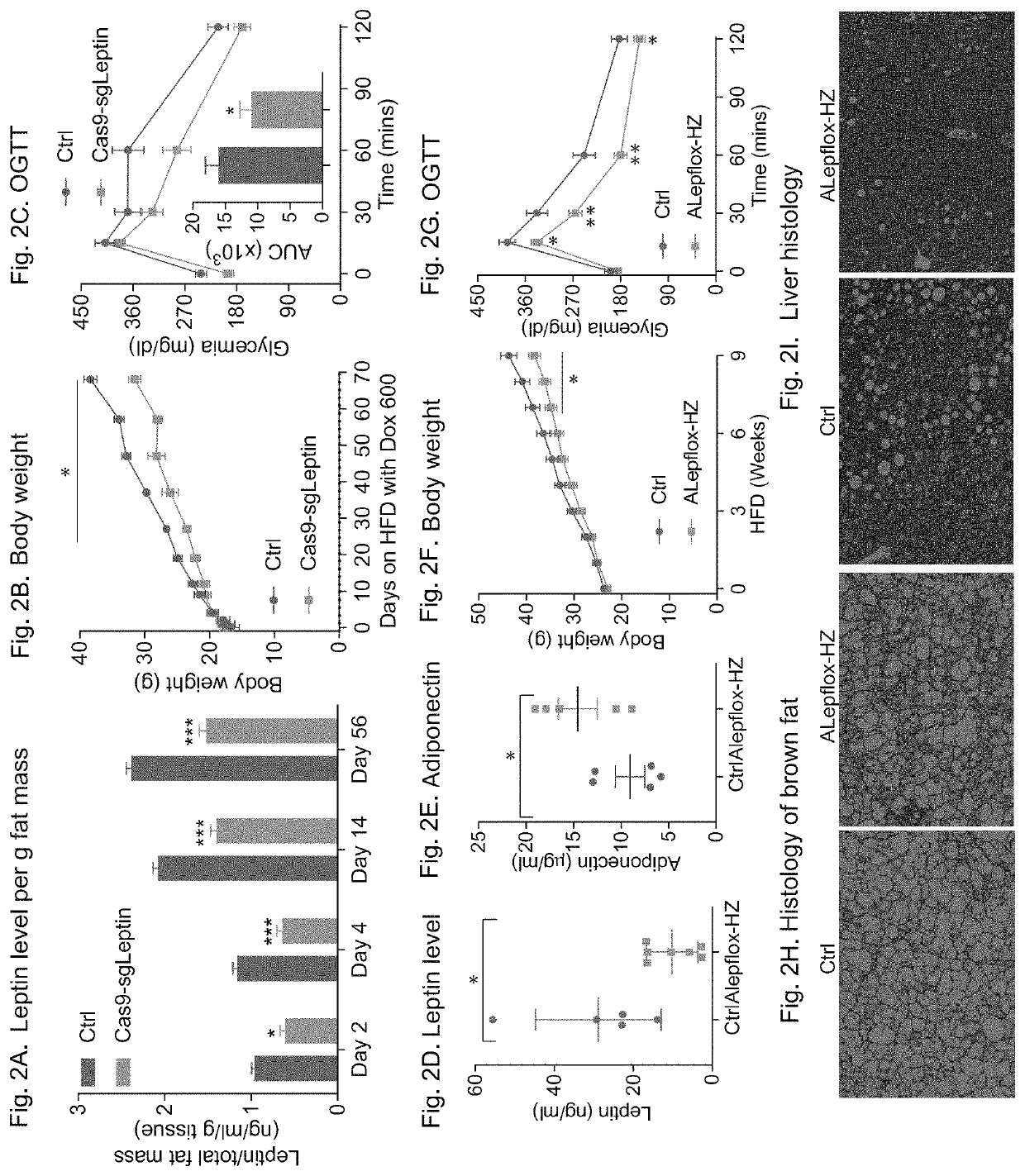Weight Loss Regimen
a weight loss and regimen technology, applied in the field of weight loss regimens, can solve the problems of unmet need to promote and sustain significant weight loss in overweight and obese individuals, severe obesity in both rodents and humans, and ineffective injection of additional leptin in the context of conventional obesity
- Summary
- Abstract
- Description
- Claims
- Application Information
AI Technical Summary
Benefits of technology
Problems solved by technology
Method used
Image
Examples
examples
[0036]Partial Leptin Reduction as an Effective Weight Loss Strategy: Increasing Leptin Levels in Obese Mice Enhances Body Weight Gain
[0037]The leptin gene expression and circulating leptin level are tightly regulated under most physiological conditions. Here, we show that acute high fat diet (HFD) feeding of wild-type (WT) mice significantly upregulates leptin expression in gWAT, with a lesser induction evident for sWAT and brown adipose tissue (BAT) (FIG. 1A). Consistent with these observations, short-term HFD feeding dramatically increases the circulating levels of leptin (FIG. 1B).
[0038]To further define the physiological roles of leptin, we generated an inducible adipocyte-specific leptin transgenic mouse (Alep-TG). We fed lean Alep-TG and littermate control mice with chow-diet supplemented with Dox600 (600 mg / kg Dox) for 1 week and observed that leptin expression is significantly induced in sWAT, gWAT and BAT depots; with no induction evident in the liver in Alep-TG mice compar...
PUM
| Property | Measurement | Unit |
|---|---|---|
| weight | aaaaa | aaaaa |
| weight loss | aaaaa | aaaaa |
| homeostatic weight | aaaaa | aaaaa |
Abstract
Description
Claims
Application Information
 Login to View More
Login to View More - R&D
- Intellectual Property
- Life Sciences
- Materials
- Tech Scout
- Unparalleled Data Quality
- Higher Quality Content
- 60% Fewer Hallucinations
Browse by: Latest US Patents, China's latest patents, Technical Efficacy Thesaurus, Application Domain, Technology Topic, Popular Technical Reports.
© 2025 PatSnap. All rights reserved.Legal|Privacy policy|Modern Slavery Act Transparency Statement|Sitemap|About US| Contact US: help@patsnap.com



